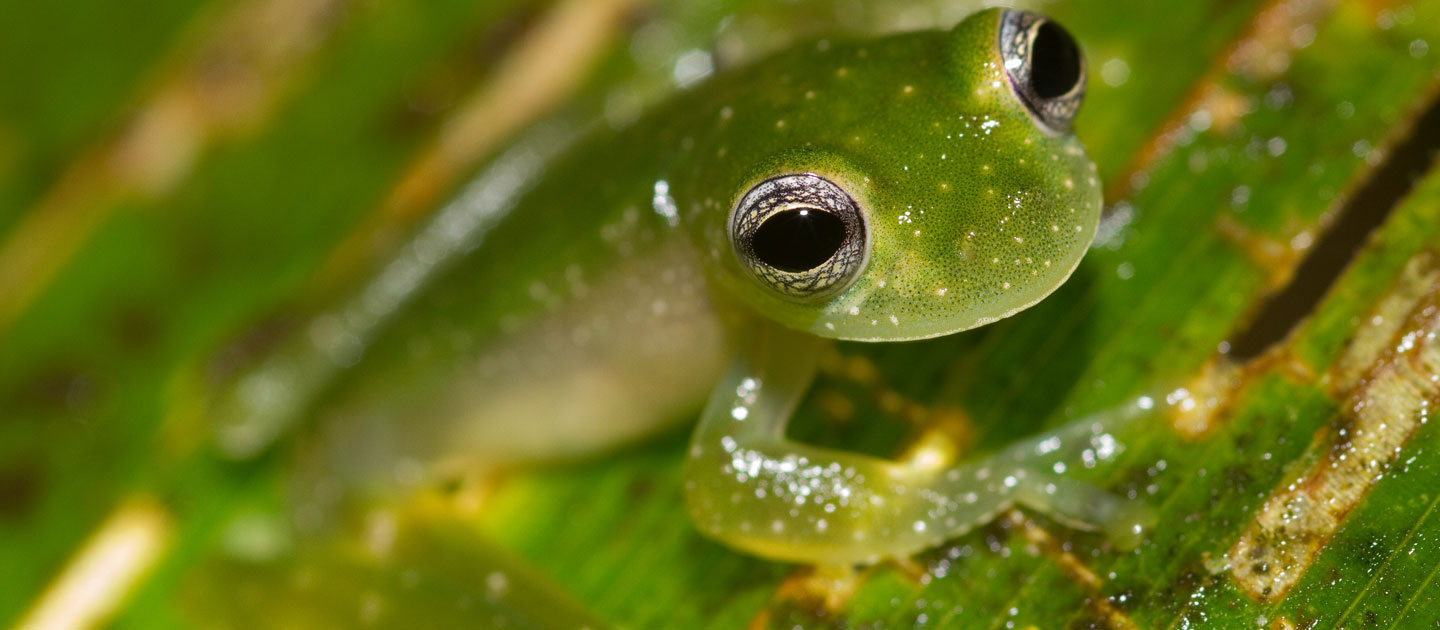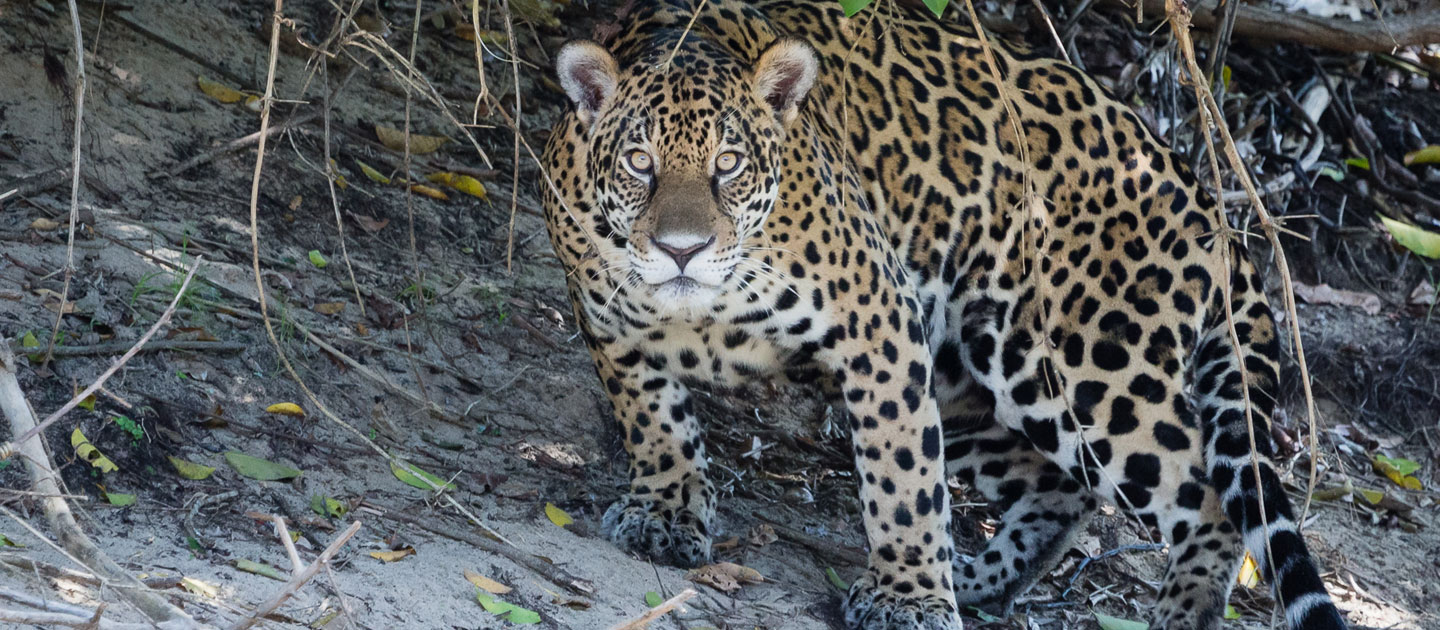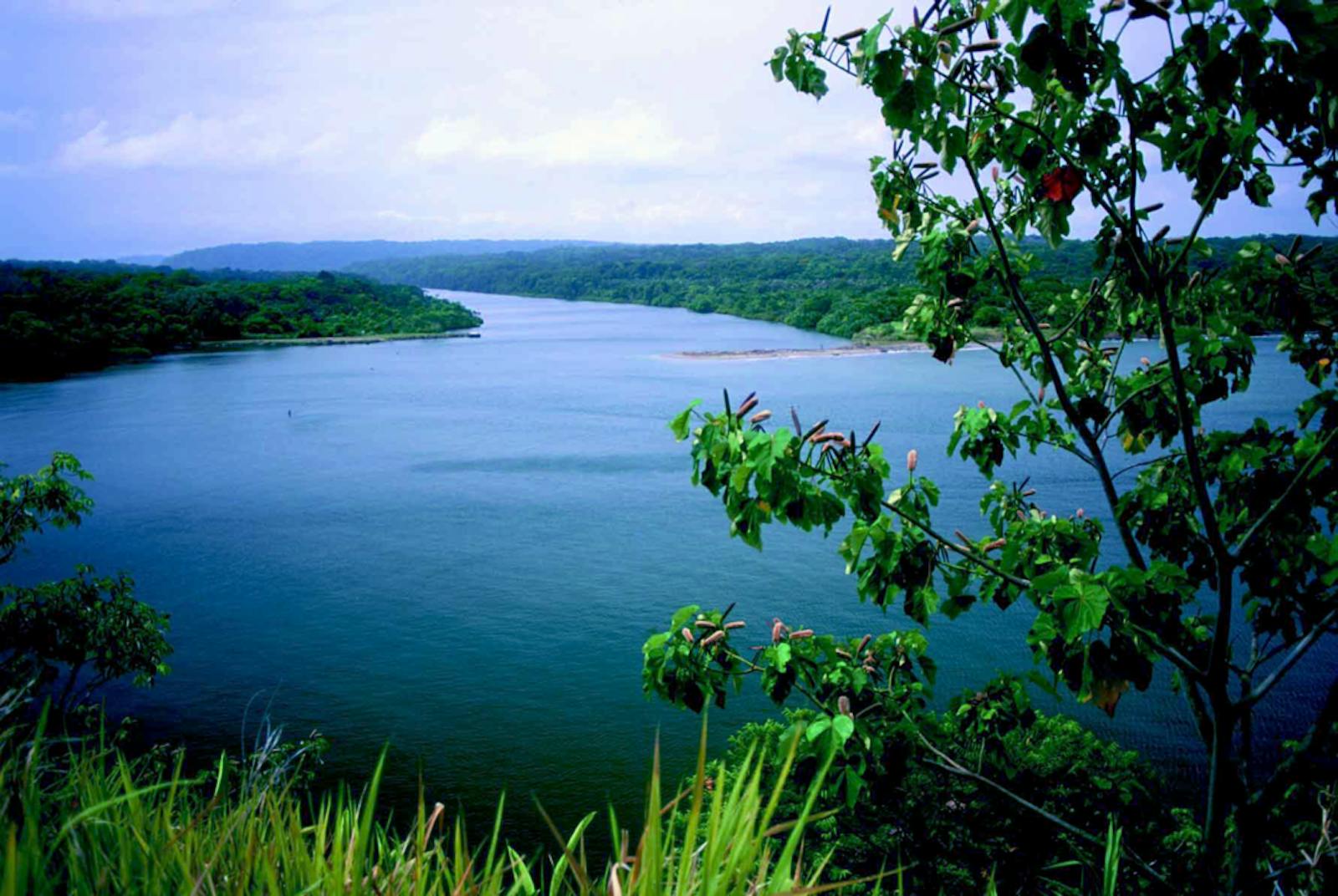Isthmian-Atlantic Moist Forests
The ecoregion’s land area is provided in units of 1,000 hectares. The conservation target is the Global Safety Net (GSN1) area for the given ecoregion. The protection level indicates the percentage of the GSN goal that is currently protected on a scale of 0-10. N/A means data is not available at this time.
Bioregion: Central American Isthmian & Colombian Coastal Forests (NT24)
Realm: Central America
Ecoregion Size (1000 ha):
5,873
Ecoregion ID:
470
Conservation Target:
76%
Protection Level:
5
States: Panama, Nicaragua, Costa Rica
The endemic Talamanca glass frog can be seen on the undersides of leaves overhanging small creeks and rivers, where they lay their eggs. When the eggs hatch the tadpoles drop directly into the water below. Glass frogs are primarily lime green in coloration but their stomach and chest skin underside are transparent, which is how they get their names.
This fascinating camouflage technique displays the frog’s organs when viewed from beneath, and render their silhouettes less obvious to any potential predators below. This species is particularly sensitive to river contamination and sedimentation, use of agro-chemicals, and invasive species such as rainbow trout that can eat the tadpoles.

The flagship species of the Isthmian-Atlantic Moist Forests ecoregion is the Talamanca glass frog. Image credit: Creative Commons
The Isthmian-Atlantic ecoregion covers the lowland Atlantic slopes mainly below 500 m elevation in southern Nicaragua, northern Costa Rica, and most of Panama. The climate in this ecoregion is hot and wet. Condensation over the warm land produced by moisture-laden air from the Caribbean Sea hitting the mountains produces constant high humidity and precipitation. Rainfall ranges from about 2,500 mm in central Panama to over 5,000 mm in southern Nicaragua. Hurricanes and tropical storms are not uncommon here and can affect both yearly rainfall averages and forest dynamics along the coastline.
This ecoregion is characterized by lush, tall tropical evergreen forests with canopy trees reaching 40 m in height, and diverse epiphyte flora. The subcanopy is largely made of palm species such as Welfia georgii, Iriatea gigantea, and the walking palm. Seasonal swamp forests occur in the lowest and flattest areas in Nicaragua and northern Costa Rica, particularly along the coast, where they grade into mangrove forests. In these forests Gavilán and Caobilla trees dominate the canopy. Two lowland emergent canopy trees, the almendron and the monkey pot, are both rapidly disappearing as they are locally used for lumber.
Located at the juncture of Central and South America, the ecoregion is highly diverse in plant and animal species; in turn, it supports a relatively low level of endemic species as it is continuous with other surrounding lowland rainforest ecoregions. Noteworthy species include jaguar and tapir, although they are increasingly rare and isolated in disconnected protected areas and marginalized in the nearby Talamanca Mountains.
Many range-restricted birds are shared with the Central American Atlantic Moist Forests ecoregion to the north, forming an Endemic Bird Area. Scarlet macaw and the endangered green macaw nest in the lowland forest. The Caribbean slope is an essential transcontinental and elevational migration route bringing an influx of bird species into the region, among the elevational migrants are the three-wattled bellbird and the endangered bare-necked umbrella bird. Finally, the Atlantic lowlands and middle elevations contain some of the rarest butterfly species in Central America and some of the world's highest butterfly species richness.

Jaguar. Image credit: Bart Von Dorp, Creative Commons
Although a few large blocks of intact habitat still exist, the Atlantic lowland forests have been fragmented in recent years. The tropical evergreen forests are not well represented in Costa Rica’s protected areas system. Only about 1,300 km2 in the lowland Atlantic zone are currently protected and the expansion of protected areas is unlikely under the current difficult economic conditions. In contrast, Nicaragua’s lack of access and the until-recently inaccessible steeper slopes of western Panama’s Atlantic lowlands and foothills have left these areas relatively forested. Large reserves exist in southern Nicaragua and eastern Panama.
While future threats in this ecoregion vary among the three countries, destruction of forest habitat through logging and conversion to cattle pasture are the most widespread and significant. Illegal logging and squatting are opening roads into the remaining large forest blocks in Nicaragua. In the already fragmented Costa Rican forests, the principal threat is clearing for cattle ranching. In Panama, the Atlantic slopes are steeper and less likely to be converted to agriculture. New roads being planned for in this region will, however, encourage human settlement and logging of accessible forests.
The priority conservation actions for the next decade will be to: 1) regulate the logging industry access to primary forests; 2) reduce the use of herbicides and pesticides in banana and other agriculture types; and 3) enhance connectivity among Atlantic slope habitats through mechanisms such as the Mesoamerican Biological Corridor project.
Citations
1. Powell, G. Palminteri, S. Schipper, J. Central America: Southern Costa Rica to the southwest coast of Panama. https://www.worldwildlife.org/ecoregions/nt0130 Accessed July 3, 2018.
2. Powell, G., J.H. Rappole, and S.A. Sader. 1992. Neotropical migrant landbird use of lowland Atlantic habitats in Costa Rica: a test of remote sensing for identification of habitat. In J.M. Hagan III, and D.W. Johnston (editors), Ecology and Conservation of Neotropical Migrant Landbirds. Smithsonian Institution Press.
3. Stiles, F.G. 1985. Conservation of forest birds in Costa Rica: problems and perspectives. In A.W. Diamond and T.E. Lovejoy (editors), Conservation of Tropical Forest Birds. ICBP Technical Publication No. 4. International Council for Bird Preservation. United Kingdom.



